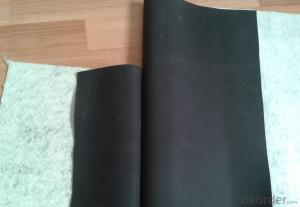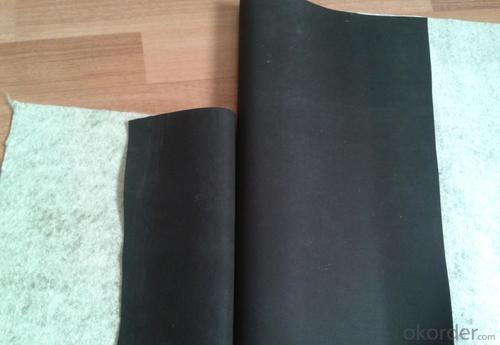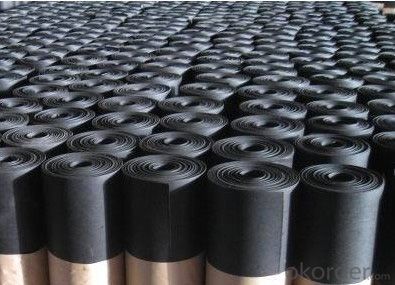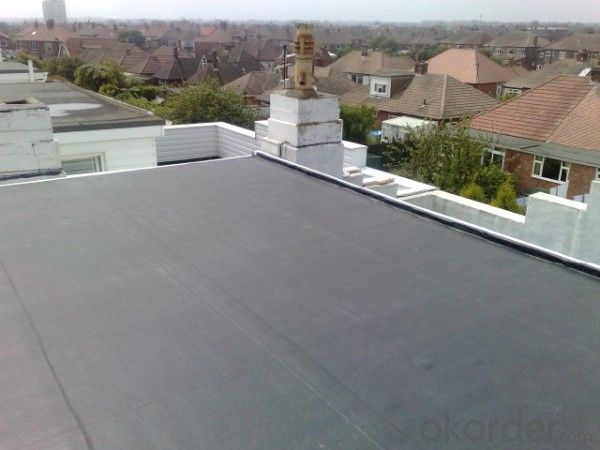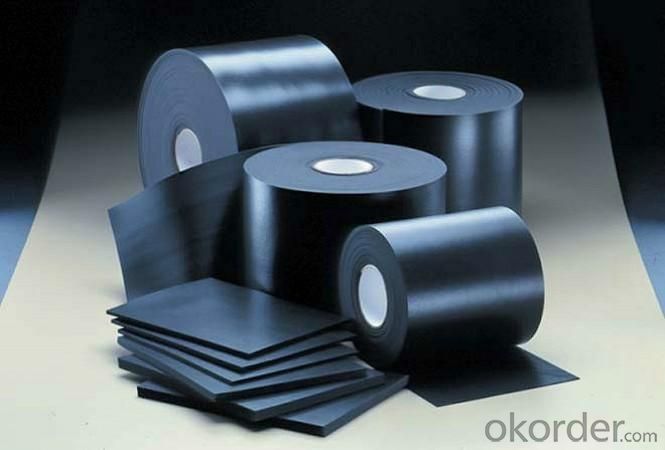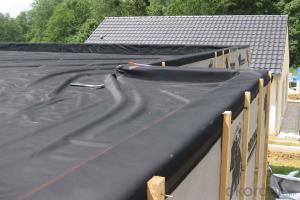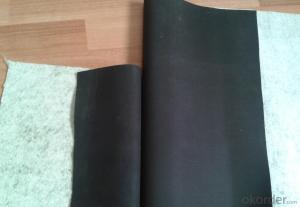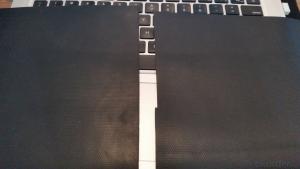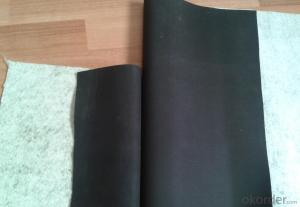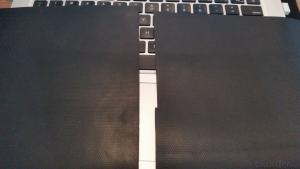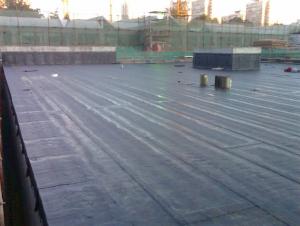EPDM Rubber Material Waterproof Membrane with Fleeced Back
- Loading Port:
- Shanghai
- Payment Terms:
- TT OR LC
- Min Order Qty:
- 50000 m²
- Supply Capability:
- 5000000 m²/month
OKorder Service Pledge
OKorder Financial Service
You Might Also Like
EPDM Rubber Material Waterproof Membrane with Fleeced Back
Description Of EPDM Rubber Material Waterproof Membrane with Fleeced Back:
This waterproof coiled material is of high elasticity with best performance among high polumer waterproof coiled material in the world.It is also the most typical one in the world.Waterproof coiled material made of ternary ethylene-propylene rubber is produced with the use of the most advanced contiuous extrusion and vulcanization technology and related equipments which are specially designed for production of such product.It is good in compactness,without bubble and performance difference in length and breadth,perfomances reach or exceed the demands of GB18173.1-2000 standard.
Main Features of EPDM Rubber Material Waterproof Membrane with Fleeced Back:
1.EPDM waterproof membrane for bridge engineering waterproof
2.EPDM waterproof membrane for water conservancy projects ,such as river bank,lake dam seepage.
3.EPDM waterproof membrane for the municipal engineering.
4.EPDM waterproof membrane for aquaculture.
Specifications of EPDM Rubber Material Waterproof Membrane with Fleeced Back:
| Number | Item | Unit | Value | |
| 1 | Size Variation | Thichness | % | ±10 |
| Width | % | ±1 | ||
| Length | % | Allowed negative | ||
| 2 | Breaking tensile strength at normal temperature | Mpa | ≥7.5 | |
| Breaking tensile strength at 70°C | Mpa | ≥2.3 | ||
| 3 | Breaking elongation at normal temperature | % | ≥450 | |
| Breaking elongation at -20°C | % | ≥200 | ||
| 4 | Tear strength | KN/m | ≥25 | |
| 5 | Impermeability(30min) | * | 0.3Mpa no leakage | |
| 6 | Bending at low tempreture | °C | ≤-40 | |
| 7 | Stretch tensor at heating | Elongate | mm | ≤2 |
| Shrink | mm | ≤4 | ||
| 8 | Air oven aging(80°C×168h) | Tensile strength at break retained | % | ≥80 |
| Elongation at break retained | % | ≥70 | ||
| 9 | Anti-alkali | Tensile strength at break retained | % | ≥80 |
| Elongation at break retained | % | ≥80 | ||
| 10 | Nuture weathing at manual simulation | Tensile strength at break retained | % | ≥80 |
| Elongation at break retained | % | ≥70 | ||
Applications of EPDM Rubber Material Waterproof Membrane with Fleeced Back:
Widely used in roofs, basement, toilet ,swimming pool, and all kinds of industry and civil building waterproofing, reservoir, vivicism, bridge, underground, tunnel and dam waterproofing ,especially to the keystone waterproofing projects which is durability, high corrosion resistance and easy deformation.



IMages of EPDM Rubber Material Waterproof Membrane with Fleeced Back:




FAQ of EPDM Rubber Material Waterproof Membrane with Fleeced Back:
1. What are we supplying?
We are specialized in producing Colorful Asphalt Roof Shingle, SBS/APP modified bitumen waterproof membrane, Self adhesive bitumen waterproof membrane, PVC waterproofing membrane, EPDM rubber roofing membrane, Single Component Polyurethane Waterproof Coating, and Spray Polyurea Waterproof Coating
.
2. How Many years experience do we have?
We have been exported to more than 20 countries in the past 15 years.
3. How long do we usually reply your request?
We always reply our customer within 24 hours.
- Q: Are waterproofing membranes resistant to frost damage?
- Yes, waterproofing membranes are generally resistant to frost damage. Waterproofing membranes are designed to be durable and able to withstand various weather conditions, including freezing temperatures. They are typically made from materials such as modified bitumen, PVC, EPDM, or TPO, which have excellent resistance to frost and other environmental factors. These materials are engineered to remain flexible and elastic even in cold temperatures, ensuring that the waterproofing membrane remains intact and effective in preventing water penetration. Additionally, proper installation techniques and maintenance can further enhance the resistance of waterproofing membranes to frost damage.
- Q: Can a waterproofing membrane be used for a commercial building?
- Indeed, a commercial building can utilize a waterproofing membrane. Specifically engineered to safeguard structures against water damage, these membranes find wide application in commercial settings, encompassing rooftops, basements, and foundation walls. Serving as a protective barrier, the membrane effectively prevents water infiltration, safeguarding against leaks, moisture accumulation, and the growth of mold. Moreover, waterproofing membranes exhibit durability, enabling them to withstand inclement weather conditions, rendering them suitable for commercial buildings exposed to heavy rainfall or extreme temperatures. Ultimately, the incorporation of a waterproofing membrane within a commercial building proves highly effective in preserving long-term structural integrity and averting costly water-related impairments.
- Q: What are the different types of waterproofing membranes?
- There are several different types of waterproofing membranes that are commonly used in construction and building projects. These membranes are designed to prevent water from penetrating through walls, roofs, or other structures, and can be applied to various surfaces. 1. Bituminous Membranes: Bitumen-based waterproofing membranes are composed of a mixture of bitumen, polymers, and reinforcement materials such as fiberglass or polyester. They are commonly used in roofing applications and can be applied as a hot or cold process. Bituminous membranes provide excellent waterproofing properties and are durable. 2. PVC Membranes: Polyvinyl chloride (PVC) membranes are synthetic materials that are highly resistant to water, chemicals, and UV radiation. They are commonly used in roofing applications, especially for flat or low-slope roofs. PVC membranes are lightweight, flexible, and easy to install. They provide long-lasting waterproofing protection and are resistant to punctures and tears. 3. EPDM Membranes: Ethylene Propylene Diene Monomer (EPDM) membranes are synthetic rubber membranes that are commonly used in roofing applications. EPDM membranes are highly durable, flexible, and resistant to UV radiation, ozone, and extreme temperatures. They can be installed as a single-ply membrane or in combination with other materials. 4. TPO Membranes: Thermoplastic Olefin (TPO) membranes are a type of single-ply roofing membrane that is commonly used in commercial and industrial applications. TPO membranes are composed of a blend of polymers and reinforcement materials. They are highly resistant to water, chemicals, and UV radiation. TPO membranes are lightweight, flexible, and easy to install. 5. Liquid Applied Membranes: Liquid applied membranes are a type of waterproofing system that is applied as a liquid and cures to form a seamless and flexible membrane. These membranes can be made from various materials such as acrylic, polyurethane, or rubber-based compounds. They are commonly used for below-grade applications, such as basements or foundations, and can also be used for roofs or other surfaces. It is important to consider the specific requirements of the project and consult with a professional to determine the most suitable type of waterproofing membrane to ensure effective and long-lasting waterproofing protection.
- Q: How thick should a waterproofing membrane be?
- The thickness of a waterproofing membrane is influenced by various factors, including the type of membrane, specific application, and desired level of protection. Typically, the thickness of a waterproofing membrane can range from 0.5mm to 4mm. For waterproofing applications below ground, like basements or foundations, it is generally recommended to use a thicker membrane to provide better defense against water infiltration and potential hydrostatic pressure. In these cases, a membrane thickness of approximately 2mm to 4mm is commonly utilized. Conversely, for above-ground applications such as roofs or balconies, a thinner membrane is often sufficient. A thickness of 0.5mm to 2mm is typically satisfactory in creating a reliable waterproofing barrier. It is important to understand that the thickness alone does not solely determine the effectiveness of a waterproofing membrane. Other factors, such as the material's composition, quality, and installation techniques, also significantly contribute to ensuring a long-lasting and efficient waterproofing solution. Therefore, consulting with a professional waterproofing expert or manufacturer is essential in order to determine the appropriate thickness based on the specific requirements and conditions of the project.
- Q: Can a waterproofing membrane be used for balconies or decks?
- Yes, a waterproofing membrane can definitely be used for balconies or decks. Waterproofing membranes are specifically designed to protect surfaces from water damage, making them an ideal choice for outdoor spaces like balconies and decks that are constantly exposed to the elements. These membranes are typically made from durable materials such as rubber or polyvinyl chloride (PVC) and are applied directly to the surface of the balcony or deck. They create a barrier that prevents water from seeping into the underlying structure, which helps to extend the lifespan of the balcony or deck and prevent issues like rotting or mold growth. Additionally, waterproofing membranes can also provide added protection against UV rays, chemicals, and foot traffic, making them a reliable choice for enhancing the durability and longevity of balconies and decks.
- Q: Can a waterproofing membrane be used on vinyl surfaces?
- Yes, a waterproofing membrane can be used on vinyl surfaces. The membrane serves as a protective layer that prevents water from penetrating and damaging the vinyl material.
- Q: Can a waterproofing membrane be used in interior or exterior applications?
- Yes, a waterproofing membrane can be used in both interior and exterior applications. It is commonly used in basements, bathrooms, and other areas prone to moisture and water infiltration. Additionally, it can also be applied to exterior surfaces such as foundations, roofs, and balconies to prevent water damage and maintain the integrity of the structure.
- Q: Are waterproofing membranes suitable for indoor applications?
- Indeed, indoor applications are well-suited for waterproofing membranes. Specifically engineered to obstruct water infiltration and moisture accumulation, these membranes provide an excellent remedy for spaces vulnerable to water-induced harm, like basements, bathrooms, and kitchens. By establishing a barrier, they effectively shield the structure from water-related problems such as mold, decay, and structural deterioration, ensuring that water does not permeate floors, walls, or other surfaces. Moreover, in addition to their protective qualities, waterproofing membranes aid in regulating humidity levels, resulting in a more pleasant and healthful indoor atmosphere.
- Q: Are waterproofing membranes resistant to efflorescence?
- Yes, waterproofing membranes are generally resistant to efflorescence. Efflorescence is the white residue that appears on the surface of materials such as concrete, brick, or stone due to the migration of salts to the surface. Waterproofing membranes are designed to create a barrier against water and moisture, preventing them from seeping into the material and carrying the salts to the surface. By effectively blocking the entry of water, waterproofing membranes minimize the occurrence of efflorescence and provide long-term protection against it. However, it is important to note that the effectiveness of a waterproofing membrane in preventing efflorescence may depend on the quality and application of the membrane, as well as the specific environmental conditions and the presence of underlying issues such as water infiltration or inadequate drainage.
- Q: Can a waterproofing membrane be exposed to sunlight?
- Yes, a waterproofing membrane can be exposed to sunlight. In fact, many waterproofing membranes are designed to withstand prolonged exposure to sunlight without deteriorating or losing their effectiveness. However, it is always recommended to check the manufacturer's guidelines and specifications to ensure proper installation and maintenance of the waterproofing membrane.
Send your message to us
EPDM Rubber Material Waterproof Membrane with Fleeced Back
- Loading Port:
- Shanghai
- Payment Terms:
- TT OR LC
- Min Order Qty:
- 50000 m²
- Supply Capability:
- 5000000 m²/month
OKorder Service Pledge
OKorder Financial Service
Similar products
Hot products
Hot Searches
Related keywords
